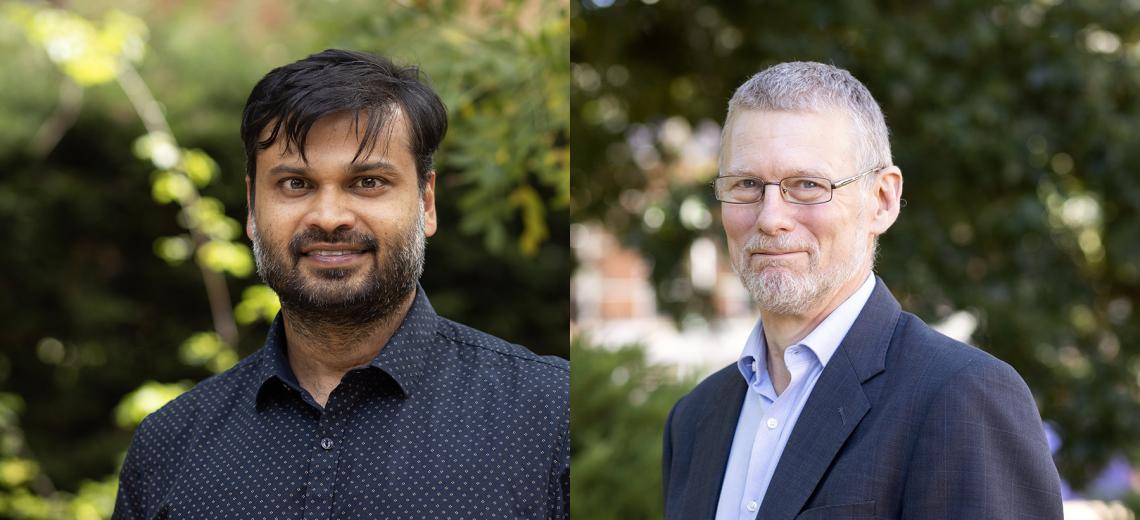
A new study by Associate Professor Gaurav Khemka and Honorary Associate Professor Geoff Warren from The Australian National University (ANU) College of Business and Economics (CBE) proposes a simplified strategy to invest and save money for retirement.
Saving for retirement requires investing then withdrawing the assets that have been accumulated to generate income during retirement. ‘Lifecycle strategies’ are used in Australia by around a quarter of superannuation funds and are the dominant retirement savings product in the United States (US)—where they are known as ‘target date funds’.
Lifecycle strategies start off by investing the majority of the savings in risky assets such as equities at younger ages, then gradually increase the amount held in safer assets like government bonds as the individual ages and retirement approaches.
The underlying idea is that individuals are less able to bear investment risk as they get closer to retirement. The investments are then drawn down to generate income over the post-retirement ‘payout’ phase, during which the mix of assets is often kept stable.
Implementing a lifecycle strategy in this manner requires adjusting how the savings are invested to follow what is commonly known as a ‘glide path’, which shifts the target allocation from riskier to safer assets as savers progress towards their retirement date.
This necessitates not only adjusting how the contributed savings are allocated, and how drawdowns are funded after retirement. It also requires constantly adjusting the investment mix towards the target asset allocation, noting that the value of the investments in the portfolio will be determined by their market performance. For instance, if risky assets outperform, their value and weight in the portfolio will increase.
Traditional lifecycle strategies need close management. This requires ongoing trade to stay on the glide path, which also incurs transaction costs. However, the question arises as to whether there might be a simpler approach.
Gaurav and Geoff have collaborated with Professor Mogens Steffensen from the University of Copenhagen to propose a more straightforward alternative for implementing a lifecycle strategy. Their approach has been recently published in Insurance: Mathematics & Economics, an A* journal.
The proposed approach entails investing 100 per cent of contributed savings into riskier investments like equities up until a pre-determined ‘switch age’, after which 100 per cent of the newly contributed savings is then invested into low-risk fixed income investments. This forms two distinct pools of assets or ‘accounts’.
Upon retirement, income is generated by drawing down on each of these accounts at pre-determined rates.
The authors call this the ‘buy-hold-sell strategy’ on the basis that it only requires investments to be bought, held, and subsequently sold during retirement to generate income. The only trades required involve buying assets and subsequently selling them to generate the income. There is no need to keep adjusting the investment mix to keep the asset weights on the glide path.
Two main inputs are required to implement the strategy. First, a ‘switch age’ has to be established. This depends on aspects such as an individual’s risk aversion and the age at which they commence saving for retirement. Second, the rates at which income is drawn from each account during retirement need to be determined. Their paper sets out how to estimate these quantities.
While the calculations entail an optimisation exercise that would be beyond most individuals, they should be within the capabilities of many providers of investment products, such as investment managers and superannuation funds, and financial planning groups with access to the required technical skills.
The paper itself sets out the mathematics behind the approach and establishes the conditions under which the buy-hold-sell strategy offers a reasonable approximation for an ‘optimal’ strategy. The authors show that the strategy does a good job, except for individuals that have high aversion to risk.
The buy-hold-sell strategy offers an attractive alternative to more traditional lifecycle strategies for those individuals who want greater simplicity in their lives. It should also save on some trading costs. The authors are hopeful that their proposed strategy will attract the attention of providers of lifecycle funds or perhaps financial advisers as an alternative that could be offered to their customers.
The College is always keen to explore research collaborations with the public and private sector and to reconnect with alumni. Please get in touch if you would like to know more about partnering with us.
Article authored by
Associate Professor Gaurav Khemka
Gaurav's research uses numerical stochastic dynamic programming to analyse the life-cycle decision-making process. With a particular focus on superannuation and retirement income modelling and policy, Gaurav is interested in the ways in which retirement outcomes for Australians can be improved through better product development and government policy.
Associate Professor Geoff Warren
Geoff undertakes research on investment-related areas with an applied emphasis, including: superannuation, retirement, fund management, portfolio strategy and long-term investing. Prior to pursuing an academic career, Geoff spent more than 20 years in investment markets, including in company research, investment strategy, equity portfolio management and asset consulting.
